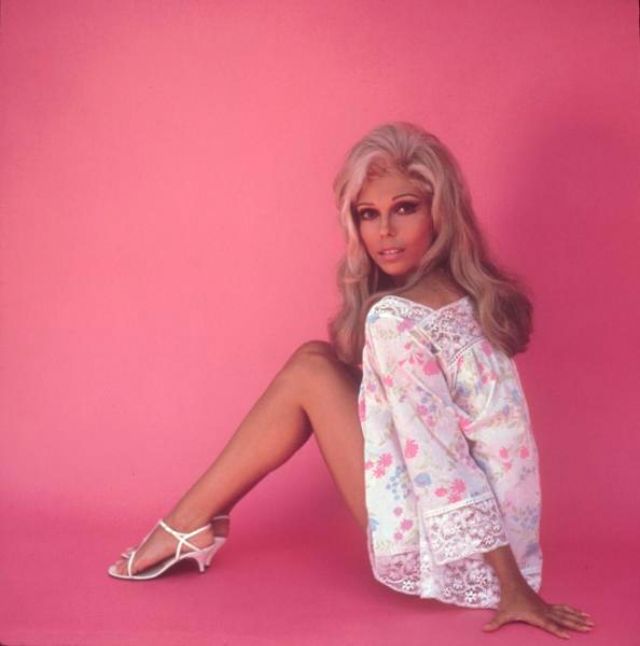Nancy Sinatra: A Glimpse Into Her Youth And Legacy
Nancy Sinatra, the iconic American singer and actress, is best known for her sultry voice and her unforgettable hits in the 1960s. Emerging from the shadows of her legendary father, Frank Sinatra, she carved out her own niche in the entertainment industry. As we delve into the journey of Nancy Sinatra young, we discover not just a talented artist but a trailblazer who challenged norms and captivated audiences with her unique style.
The 1960s was a transformative era for music, and Nancy Sinatra played an essential role in shaping its landscape. With her distinctive sound and fashion sense, she became a symbol of the times, embodying the spirit of youth culture while navigating the complexities of being a starlet in a famous family. Her early career was marked by experimentation, and her hits like "These Boots Are Made for Walkin'" became anthems for a generation.
As we explore Nancy Sinatra young, it’s crucial to understand her influence on music and popular culture. From her iconic collaborations to her striking visual aesthetics, she redefined what it meant to be a female artist in a male-dominated industry. This article aims to unravel the story of Nancy Sinatra and celebrate her legacy through her youth, providing insights into her life, career, and the impact she made on the world.
What is Nancy Sinatra's Biography?
Nancy Sinatra was born on June 8, 1940, in Jersey City, New Jersey. The daughter of the legendary Frank Sinatra and his first wife, Nancy Barbato, she grew up in a musical environment that would later shape her career. Despite being a part of a famous family, Nancy sought to establish her own identity in the music world. Below is a brief overview of her personal details and biodata:
| Detail | Information |
|---|---|
| Full Name | Nancy Sandra Sinatra |
| Date of Birth | June 8, 1940 |
| Place of Birth | Jersey City, New Jersey, USA |
| Occupation | Singer, Actress |
| Genres | Pop, Country, Rock |
| Notable Works | "These Boots Are Made for Walkin'", "Bang Bang (My Baby Shot Me Down)" |
| Parents | Frank Sinatra, Nancy Barbato |
How Did Nancy Sinatra Young Begin Her Career?
Nancy Sinatra's career began in the late 1950s when she signed with Reprise Records, a label founded by her father. Initially, her early work was overshadowed by her father's immense popularity. However, she began to find her footing by experimenting with different music styles, ultimately leading to her breakthrough in the 1960s. The pivotal moment came when she recorded "These Boots Are Made for Walkin'", which skyrocketed to the top of the charts and established her as a solo artist.
What Were Nancy Sinatra's Major Hits and Achievements?
Throughout her career, Nancy Sinatra produced several hits that resonated with audiences and showcased her distinctive voice. Some of her most notable songs include:
- These Boots Are Made for Walkin' - A defining anthem of the 1960s.
- Bang Bang (My Baby Shot Me Down) - A haunting ballad that showcased her vocal depth.
- Summer Wine - A duet with Lee Hazlewood that became a classic.
- How Does That Grab You, Darlin'? - A song that further solidified her place in music history.
Nancy's achievements extend beyond music. She ventured into acting, appearing in films and TV shows, including a notable role in "The Wild Angels" alongside Peter Fonda. Her contributions to both music and film have left an indelible mark on popular culture.
What Impact Did Nancy Sinatra Young Have on Feminism and Pop Culture?
Nancy Sinatra's music and persona challenged traditional gender roles and expectations in the 1960s. She became a symbol of empowerment for women, embodying independence and strength through her music and fashion choices. Her bold attitude and unapologetic self-expression resonated with a generation of women seeking to break free from societal constraints.
How Did Nancy Sinatra's Style Influence Fashion?
In addition to her musical contributions, Nancy Sinatra's style became a significant aspect of her identity. Known for her glamorous yet edgy fashion choices, she often sported iconic go-go boots, mini dresses, and striking hairstyles. Her look influenced countless young women and set trends that are still celebrated today.
What Is Nancy Sinatra's Legacy Today?
Today, Nancy Sinatra's legacy continues to thrive. Her music remains timeless, inspiring new generations of artists and fans alike. Despite the changes in the music industry, her songs are frequently covered and sampled, proving her influence endures. Moreover, she has become a beloved figure in pop culture, with her work being referenced in films, television shows, and even social media.
How Can We Appreciate Nancy Sinatra Young's Contributions to Music?
To appreciate Nancy Sinatra's contributions, one can explore her discography, watch her performances, and read about her life and career. Understanding the context of her work within the cultural landscape of the 1960s can provide deeper insights into her impact. Additionally, engaging with her story can inspire a newfound appreciation for the artistry and resilience she embodied during her youth.
In conclusion, Nancy Sinatra young represents a remarkable chapter in music history, filled with creativity, empowerment, and cultural significance. Her journey not only reflects her personal growth as an artist but also mirrors the evolution of women's roles in the industry. As we continue to celebrate her legacy, it becomes clear that Nancy Sinatra's influence will remain timeless, echoing through generations to come.
Understanding Laverne Cox's Relationship Journey
Unveiling The Life And Career Of Willie Aames
Unveiling The Life Of Giancarlo Esposito's Wife: A Journey Beyond The Spotlight


